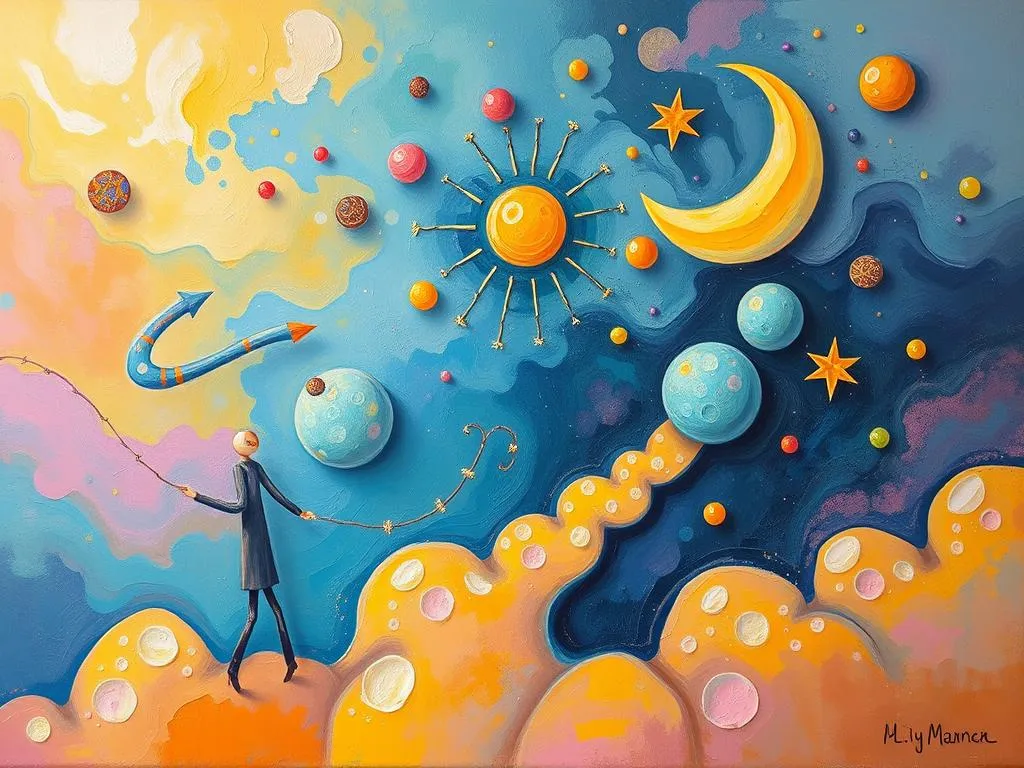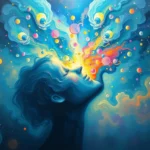
Have you ever woken up from a dream and felt a lingering sense of wonder or confusion? Dreams often leave us with a swirling mix of emotions and images, inviting us to explore their deeper meanings. As we navigate the landscape of our subconscious, understanding dream symbols can illuminate our personal journeys and unveil hidden truths about ourselves.
As you read on, let’s embark on a journey through the world of dream symbolism, rich with cultural perspectives, psychological insights, and practical advice. Together, we’ll decode the symbols that dance through your dreams and discover how they can guide your waking life.
The Language of Symbols: Decoding Your Dreams
Dreams are a universal language, rich with symbols that convey messages from our subconscious. Each symbol carries unique meanings shaped by personal experiences, cultural backgrounds, and psychological states. For instance, animals in dreams can reflect instincts or emotions. A snake, for example, might represent fear or transformation, based on its cultural associations with danger or rebirth.
Colors also play a pivotal role in dream interpretation. A vibrant red could symbolize passion or anger, while a soft blue might evoke calmness or sadness. The context of the color in the dream—what it felt like, what was happening—can shift its meaning dramatically.
Consider dream settings as well. A house often signifies the self, with different rooms representing various aspects of one’s personality. An attic might represent hidden memories, while a basement could symbolize repressed emotions. Exploring these settings can lead to profound self-discovery.
Moreover, themes of movement in dreams—like flying, falling, or being trapped—often reflect our waking life situations. Flying can symbolize a desire for freedom or escape, while falling might indicate feelings of loss of control or insecurity. Recognizing these patterns allows us to connect our dreams to our daily challenges and triumphs.
As you reflect on your dreams, remember that the key to interpretation lies within you. Your emotions and reactions to the symbols are critical in understanding their significance. Keep a dream journal to track recurring symbols and themes, fostering a deeper connection to your inner world.
Dreamscapes Unfolded: Scenarios From the Subconscious
To better grasp the nuances of dream symbolism, let’s explore a few scenarios that illustrate how different symbols can reflect our waking lives. Think of these situations as windows into the rich tapestry of your own dream experiences.
1. The Unfamiliar Path
Imagine dreaming of walking down an endless corridor filled with doors of various colors. Each door represents a choice or opportunity in your life. The feeling of unease as you approach each door reflects your fear of the unknown. This dream suggests that you are at a crossroads, grappling with decisions that may feel overwhelming.
2. The Abandonment
Picture yourself in a dream where you find yourself lost in a crowded market, frantically searching for a loved one. The chaos around you symbolizes your current feelings of anxiety or abandonment. This dream may indicate a deep-seated fear of losing connections or feeling unsupported in your waking life.
3. The Rebirth
Consider a dream where you’re floating in a serene lake, surrounded by blooming flowers. This tranquil scene suggests a time of renewal or healing. It may indicate that you are processing emotions or experiences, leading to personal growth. The flowers symbolize potential and hope, inviting you to embrace new beginnings.
4. The Chase
Envision a scenario where you’re being chased through a dark forest. The pursuer represents an unresolved issue or fear that you are trying to evade. This dream urges you to confront what you’ve been avoiding, as the resolution lies in facing your fears head-on rather than running from them.
5. The Anchor
Imagine dreaming of being on a ship during a storm, desperately seeking an anchor to stabilize your vessel. This dream signifies a need for grounding in your life, suggesting that you may feel adrift amidst chaos. It may encourage you to seek support from friends or family to regain your footing.
Each of these scenarios reflects universal themes that many can relate to, making them powerful tools for self-reflection. Ask yourself what emotions arise when you recall your dreams, as these feelings can provide insights into your waking life challenges and desires.
Awakening the Self: Using Dreams for Personal Growth
The journey through your dreams doesn’t end with interpretation; it can be a powerful catalyst for personal growth. By engaging actively with your dreams, you can unlock pathways to self-discovery and healing.
1. Reflective Practices
Consider integrating reflective practices into your daily routine. After waking, take a moment to jot down your dreams, capturing the symbols and emotions present. Engaging with your dreams regularly can enhance your understanding and help you identify patterns over time.
2. Visualization Techniques
Incorporate visualization techniques to connect with the messages from your dreams. For instance, if you dream of a mountain, visualize yourself climbing it, embracing the challenges and opportunities that come your way. This practice can empower you to confront the obstacles in your life with greater resilience.
3. Emotional Release
Use your dreams as a tool for emotional release. If you find yourself dreaming of conflict, create a safe space to express those feelings through writing or art. Channeling your emotions can lead to profound insights and healing, allowing you to process what your subconscious is trying to convey.
4. Setting Intentions
Set intentions before sleep to guide your dreams toward specific themes or issues you want to explore. For example, if you’re seeking clarity on a decision, ask your subconscious for guidance. This practice can cultivate a deeper connection between your waking and dreaming selves, enhancing your self-awareness.
5. Seek Community
Consider joining a dream interpretation group or workshop. Sharing your dreams with others can provide fresh perspectives and foster a sense of community. Learning from different cultural interpretations can broaden your understanding and appreciation of the dream world.
As you navigate the intricate realm of dreams, remember that they are your personal guideposts, illuminating the path to your true self. Embrace the symbols, reflect on your experiences, and allow your dreams to inspire your waking life.
In closing, the journey of understanding your dreams is an intimate dance with your subconscious. Allow the symbols to speak to you, and in doing so, you may find the answers you’ve been seeking. As you delve deeper into this exploration, may you awaken to the profound wisdom that lies within your dreams, leading you toward a more authentic and fulfilled life.







